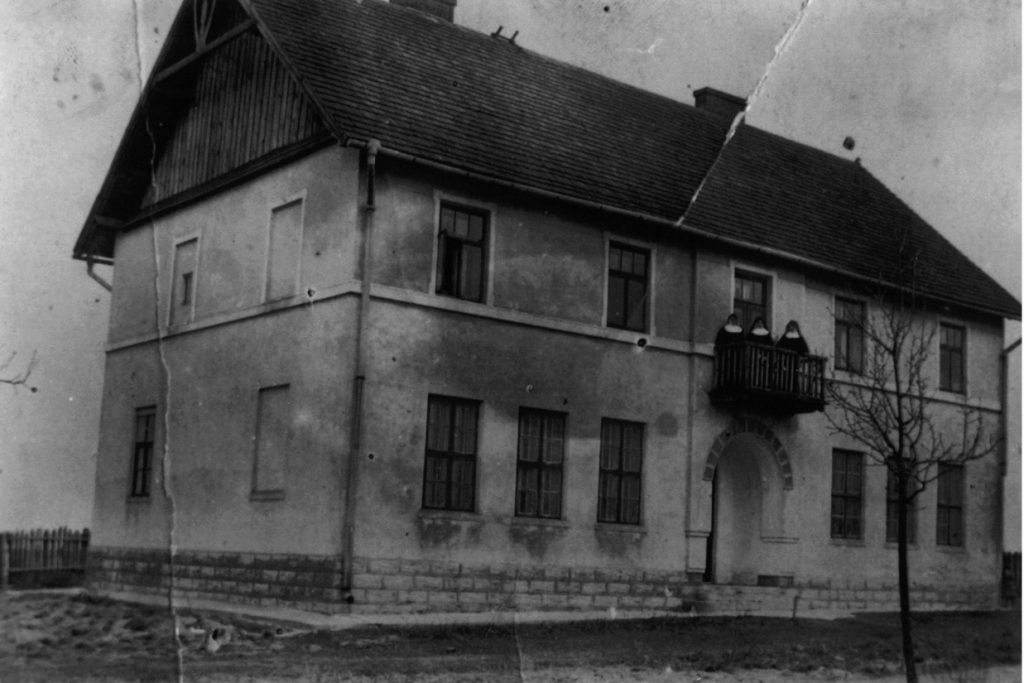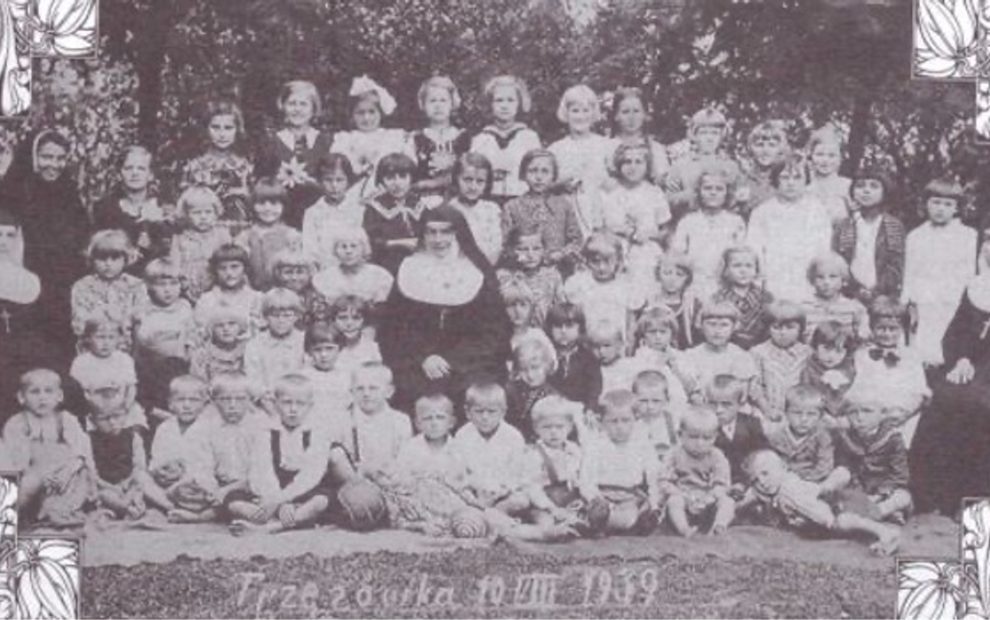Greater love has no man than this, that a man lay down his life for his friends (John 15:13).
On Palm Sunday in 1942, a traumatized Jewish child knocked on the convent door of the Sisters of St. Joseph in the small Polish village of Trzesowka. The shabbily dressed girl insisted she was Polish and Roman Catholic and said her parents had just been killed by the Germans. The nuns were familiar with all the local children and suspected she might be one of the Jewish refugees hiding in the forests. Their intuition was correct. They later learned that her mother had died of suicide, and her father was missing.
That was the year the Nazis began using gas chambers for the mass murder of Jewish people. The punishment for sheltering a Jewish person was execution—of the rescuer and anyone living with them. In Poland at that time, thousands of nuns and priests, along with professors and politicians, were also targeted for execution and imprisonment. Despite knowing these risks, the sisters didn’t hesitate to bring Rachela into the convent.
Courage often shines most brightly in the darkest of times. The Sisters of St. Joseph understood that God sometimes asks us to show strength and bravery in helping to defend the vulnerable.
Located in Poland’s most impoverished area, Trzesowka was a world apart from the more progressive and cosmopolitan cities of Warsaw and Krakow. The convent, which was established in 1925, faced the same poverty as the villagers. In the years before World War II, the convent sisters were involved in many charitable activities, such as conducting school, and organizing sewing classes and camps for children. They also cared for the ill in the nearby villages and were consulted on all sorts of practical matters.

The sisters’ medical services proved invaluable for the villagers as there were no local doctors or clinics. Most sisters were trained as nurses and gained experience in hospitals before the war. They were also known for their knowledge of herbal medicines, often the only locally available remedy. The villages’ houses were far away from each other in the wilderness, so the sisters were forced to travel long distances to treat the ill.
During her five years of caring for the sick in Trzesowka, one sister recalled that none of her patients died, even though she performed some dangerous procedures. One night, she was called to treat a seriously ill boy suspected of having encephalitis. A trip to the doctor was impossible because of the long distance. She used her treatments and available medications, and he was much better within a few days. He was soon helping his parents in the fields.
In addition to their charitable endeavors, the sisters supported their convent by farming their own lands, an arduous task because of the barren, sandy soil. This part of Poland had no modern services such as electricity, phones, or running water.
Early each day, with a sickle in hand, the sisters made the sign of the cross and walked silently to their fieldwork “while the birds sang.” After three hours of work, they attended Mass. Then, they spent the hottest hours doing housework and service projects for the community. In the late afternoon, they again worked the fields by hand without any machinery. Despite their many duties, the sisters found time to grow colorful flowers in their gardens.
Convent life was spartan. Each nun had her own room, or cell, equipped with a bed, a small table, and a wardrobe. A simple chapel for daily prayer was furnished with a large crucifix on the wall, two paintings, a pair of kneelers, and a stoup with holy water by the door.
On September 1, 1939, the Germans invaded Poland. The occupying forces terminated most of the sisters’ charitable and community efforts. The German military soon took over a massive forested area a few miles from the convent to build Camp Heidelager. This was the largest SS training camp outside of Germany and included a concentration and extermination camp.
During the war, Germany began the process of “Lebensraum” to develop Poland as the breadbasket of the occupied countries. They gradually colonized Poland with Germans and used the Poles as forced and slave labor. Germany’s long-term plans included targeting the Polish people for extinction. When Polish soldiers sought shelter in the area, the sisters cared for their wounded. The nuns shared their medicine, food, and medical supplies, even making bandages from bed linen and their clothes. Desperate Jewish refugees, fleeing the Nazis, also sought help from the sisters.
Since the Gestapo frequently raided and searched the convent, several sisters fled and found shelter in an empty cottage in the forested wilderness in October 1941. There, they frequently helped both Jewish refugees and partisan soldiers to hide from the Germans. But after the Germans found and shot two people who were hiding next to the house, the sisters decided to return to Trzesowka. Two days after they left, the Germans burned down the cottage.
In 1943, Hitler moved his top-secret V missile research project to nearby Blizna. Because of the convent’s close proximity to the launch areas, the sisters frequently heard the whistles of bullets and bombs. Then, in July 1944, the Germans abandoned Camp Heidelager. The convent then became a makeshift hospital serving many injured and those exhausted by hunger and disease from the war. The sisters walked from house to house to tend to the ill, as no one had a horse for transportation. In 1946, with the convent devastated by the Germans and then plundered by the Russians, the sisters set about reorganizing to start an orphanage.
Rachela, the little girl who came to the convent door asking for assistance, was only one of the Jewish refugees who turned to the sisters. Though initially she hid the truth about her Jewish identity, eventually, she trusted the sisters enough to tell them her story. One of the nuns, Sister Roberta, raised and educated Rachela until she went to university in Krakow. Sister Roberta’s and Rachela’s testimonies are among a few first-hand accounts from both a Holocaust rescuer and a survivor. Their stories illustrate the profound impact acts of kindness can have in the midst of unimaginable cruelty.
Later, Poland was taken over by the Soviet Union, which confiscated most of the convent’s livestock and farmlands. As time progressed, the farm ran a deficit, and the convent could no longer function as a religious order in Trzesowka. The convent closed on November 27, 1986, and the house is now under private ownership.
I often reflect on the moral and ethical dilemma these nuns experienced and wonder what I would have done if I lived during WWII in Poland. Would I have sheltered a Jewish refugee, even knowing my children and grandchildren might be killed if the Germans found out?
The Sisters of St. Joseph lovingly risked their lives not only serving the terrorized and impoverished villagers of Trzesowka but also assisting the partisan fighters and the Jews whom the occupying forces were targeting. Today, the sisters do not qualify for Yad Vashem’s “Righteous Among the Nations” designation because of the lack of required testimony. However, we can say about them, in the words of Jesus’ parable: “Well done, good and faithful servant!”
Header image: Sister Roberta Sutkowska Convent School 1939 (Elzbeita Wilk, permission granted in writing.)













Add comment